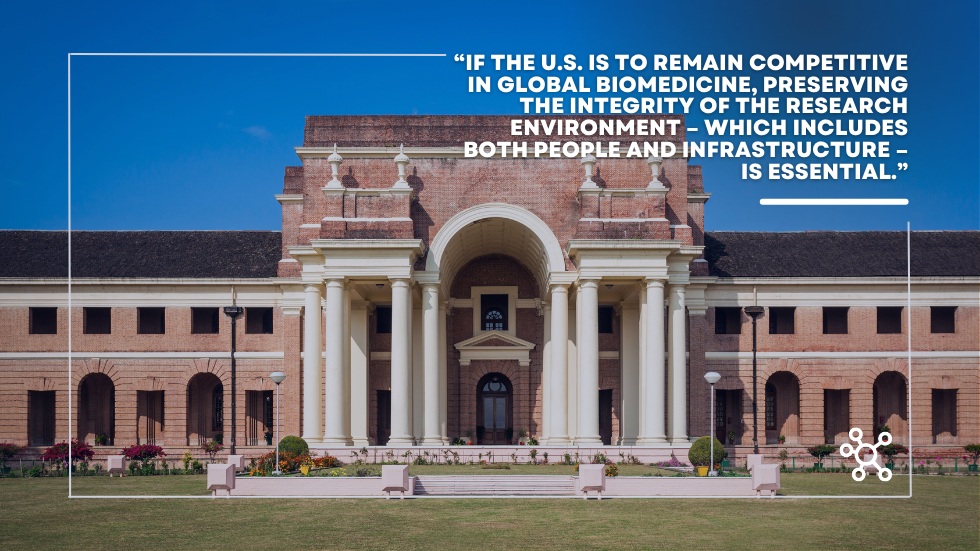This one-stop overview covers the basics and connects you to the fine points of hiring in biotech
Talent. In biotech, it’s everything. From startups to powerhouses, biotech companies depend on talent to make their mark. Their fortunes rise and fall on the backs of the talent they attract and hire. There’s lot at stake in getting it right.
This broad-strokes overview will help you put the pieces together. It gathers all the key considerations in one place and provides links to deeper dives into specific topics. Approach it as you would a maze or a network of trails, exploring the paths that spark your interest. And any time you need further information or guidance, Sci.bio is here to help.
Download the Quick Reference Guide
LAWS OF ATTRACTION
Attracting the right talent
Top-tier PhDs are unlikely to find you via scattershot job posts on LinkedIn. They’re being courted by recruiters. They know they have a lot to offer and expect their value to be recognized. The best and brightest also seek advancement pathways that go beyond cost-of-living increases or flex-time.
To recruit the right PhDs you need to play in their ballpark. A high-quality recruiter can help you differentiate your offering, match candidates with requirements, and develop personalized invitations that bring the best candidates to the interview room. Recruiters specializing in biotech also have the network to jumpstart the hiring process. With an ear to the ground at the right job fairs and networking events, they give you a direct pipeline to the talent that matches your needs.
Company culture & branding
A growing body of research suggests that a healthy company culture boosts profitability and return to shareholders. Not just that, but over 77% of job candidates consider company culture when applying for a position. Defined as the attitudes and behaviors of a company and its employees, Company culture encompasses such values as agility, diversity, and integrity. Here’s where it gets tricky: executives and employees may have very different perceptions of their workplace culture. A 2020 Accenture report notes that, while 68% of leaders believe they create empowering environments, only 36% of employers agree.
The question then becomes: how do you create a culture that attracts high quality? Part of the answer, as detailed in this company culture series, lies in the people you hire, especially the first 20 to 25 people in your organization. It also helps to put words to the culture you envision, much as you would write out a mission statement. No less importantly, you need to broadcast your company culture to the world. That’s where company branding comes in. Effective branding strategies include tweaking your careers page and profiling your culture on your Facebook or LinkedIn profile, among several others.
Compelling job descriptions
Start with the right lingo: to attract serious professionals, your job description should “speak biotech.” If the terms “CRO” or “post-market surveillance” trip up the person reading the description, she’s not the right candidate. The job description should also align with your organizational culture, giving top biotech candidates a sense of the workplace atmosphere and values. If you value straight talk, for example, use clear everyday language. Does attention to detail top your list? Make sure your grammar goes through a zero-tolerance sieve.
A good job description follows a logical sequence that includes transparent information about roles, responsibilities, and benefits. (Specifics are always your friend.) To generate interest among top-tier candidates, start with the job requirements unique to this group. You’ll find more details on crafting a clear, concise, and attention-getting job description in this piece on attracting biotech talent.
See our post Writing Job Descriptions to Attract Biotech Talent for a deeper dive.

Getting social
No longer an optional or add-on strategy, social media lies at the heart of contemporary recruiting. Its numerous advantages include low cost (or no cost), ability to convey the face of your brand, and strong potential to attract a good cultural match.
Social media appeals to the fundamental human desire to see and be seen. If those glamour shots could talk, they would all say the same thing: “Look at me.” Just like individuals, businesses use social media to put their best foot forward. Don’t be afraid to show off your accomplishments and employees on social media (though there’s a right way and a wrong way to do it).12
Of course, you need to match the medium to the message. Facebook, LinkedIn, Twitter, Instagram, YouTube—each of these powerhouses has its own rules of engagement. From job search hashtags to visual success stories, platform-specific social media strategies can help you connect with the right people.
Don’t forget to post jobs on your own website, of course. If your site isn’t mobile-friendly yet, it’s time to change that, as a website that’s current will help attract the best candidates. The millennials and gen-Z candidates in the talent pool expect nothing less.
The employee referral engine
Employee referrals yield wins on several fronts. The referring employee experiences the pride of growing the company and receives a commission. The employer saves time and money by engaging the existing workforce in the search. The new hire steps into an environment where he already feels connected, increasing the odds he’ll commit to the job and stick around. Better fit, improved engagement… the list goes on.
In terms of ROI, employee referrals top the list of recruitment strategies. They reduce the time to hire and the cost of hiring. All told, they generate more profit for their organizations than people hired through other strategies.15
Some employers create structured employee referral programs, while others prefer to keep things looser. An experienced biotech recruiter can help you set up a program that meets your needs and makes sense for your organization.
Download the Quick Reference Guide
SMART RECRUITING
When to work with a recruiter
Why would you outsource talent acquisition search to a recruiter when you have an experienced HR department that can handle hiring directly? The short answer: Results. Experienced biotech recruiters know the industry inside out, have a deep talent pool to draw from, and know which hard and soft skills matter most for the positions you seek to fill. They know not just which candidates to approach, but how to approach them, as explained in this post on the recruiting experience. They can also act as advisors, updating you on industry standards for salaries and benefit packages so you don’t miss opportunities to attract the best people. Bottom line: a good recruiter costs money, but saves you more.
A word of caution: while sometimes confused with “recruiter,” the term “headhunter” means something different. A headhunter finds potential candidates for the position(s) that a company is looking to fill and pass the information to the company. That’s it. A recruiter doesn’t just “hunt heads” but gets involved in the hiring process itself, posting job openings and prescreening candidates. Needless to say, these extra services yield an especially high ROI if you plan to hire more than one employee.

The RPO model
What used to be called staffing or recruiting is now called talent acquisition. This shift makes sense when you consider the increasing complexity of specialized recruiting. Confidentiality agreements, diversity requirements, professional development… today’s biotech employers have to juggle all these factors when making a hire.
Faced with this complexity, some companies divvy up functions among several external providers, though this approach carries the risk of service overlap and cost creep. A Recruitment Process Outsourcing (RPO) model—one of the options offered by Sci.bio—sidesteps these risks by consolidating services in a cost-effective package.16 For large or recurring recruitment needs, RPOs can even provide their own employees or HR-management services. Other advantages of the RPO model include multiple candidate channels and an overarching recruitment strategy to fill the Biotech talent void as discussed in our article.
Selecting your recruiter
The same qualities that distinguish top candidates set top recruiters apart – qualities like ability, persistence, and integrity. This means the search for a recruiter requires as much discernment as the biotech hiring process itself. Before anything else, evaluate a recruiter’s expertise in your niche. “Specializing in biotech” on a business card hardly guarantees a good match, so don’t hesitate to ask a recruiter about their recent placements and the depth of their talent pool.
High-quality recruiters use logical methods and can walk you through their processes, while also zeroing in on your individual needs and discarding strategies that don’t serve them. A series of targeted questions can help you select a recruiter who has the muscle to track down the best medical liaison in rare neurologic diseases—and can continue to deliver the goods as new vacancies open up in your organization.
Recruiting technology trends
Technology never sleeps. To attract bright lights in biotech, many of whom belong to the millennial or post-millennial generations, you need to enter the tech world they inhabit. Recent years have seen tablets and smartphones replace computers as the preferred mode of communication for this demographic, so “go mobile or go home.” Once you’ve filled your candidate pool, artificial intelligence (AI) software can help you zero in on suitable candidates more quickly and effectively. It does without saying that the best biotech recruiters don’t rely blindly on such technology. Intuition and experience will never become obsolete.
How to support your recruiters
In an ideal world, recruiters and hiring managers would work harmoniously toward the common goal of hiring the best person for the job. In practice, the relationship can easily get tense. For example, the hiring manager may feel dissatisfied about the shortlist of candidates, while the recruiter may chafe under what feels like unreasonable expectations. Or the two parties may hold different views on strategy.
Delineating roles and responsibilities at the outset can nip such problems in the bud. Establish metrics to gauge the recruiter’s progress and performance, such as the number of people interviewed and reasons for rejecting candidates. During the candidate search and selection process, a policy of regular and transparent communication between HR and the recruiter can help avoid misunderstandings and mutual resentment.
SCREENING AND INTERVIEWING
Using AI screening tools
Over the past decade, AI has come into its own in the talent acquisition field. Defined as the simulation of human intelligence by programmed machines, AI can process large volumes of data and turn it into actionable information. Within a biotech talent search, AI screening tools can help ensure diversity in the applicant pool, facilitate the assessment of applicants in remote locations, and gather meaningful applicant data. Used judiciously, these tools can save time and cut costs. Indeed, two-thirds of recruiters and hiring managers who responded to a 2018 LinkedIn survey reported that AI had saved them time.
On the flip side, AI tools can easily step into gimmicky territory, and critics have argued they can introduce an element of discrimination to the hiring process. Competent biotech recruiters avoid such traps and use AI to zero in on relevant aptitudes and cultural fit. And alarmists can relax: no matter how sophisticated AI becomes, it will never fully replace human perception.

Preparing for the interview
No less important for employers than for job seekers, interview preparation paves the way for a well-run interview that covers the important ground in the allotted time. Before meeting a candidate, take the time to read their resumé so you’ll know what questions to ask and avoid requesting information they’ve already provided. Jot down your interview questions in advance, focusing on open-ended questions that invite meaningful discussion and allow the candidate’s personality to come through. If several people will be interviewing a candidate, assign different roles or angles (e.g. background, presentation skills, problem-solving skills) to each interviewer to avoid duplication of effort.
The interview also offers employers a chance to broadcast their culture without saying a word about it. A caveat: be sure to walk the talk. If you have described your company culture as relaxed, but the interviewers all show up in starched shirts with cufflinks, discerning candidates will perceive the mismatch.
Avoiding common interview mistakes
When evaluating candidates, interviewers often run through a laundry list of job skills, such as writing or public speaking, but this approach could backfire if you look for skills the candidate won’t actually need on the job as we discuss in our article, YOU’RE (PROBABLY) DOING IT ALL WRONG: Identifying and avoiding hiring mistakes in the life sciences. An insistence on career ambition could lead you to bypass the brilliant microbiologist who wants nothing more than to mess around in the lab. The idea is to match the applicant’s skill set to the job requirements, rather than a prefab asset list. The same caveat applies to relying on first impressions, which may reflect our own biases as much as the interviewee’s relevant skillset.
Finally, remember that the conversational interview gives you just one angle on a candidate. To get the full picture, you’ll need to supplement it with other techniques and tools. A recruiter with experience in specialized talent acquisition can offer guidance in this regard.
Behavioral interviewing
Behavioral interviewing falls under the umbrella of “structured interview”—an approach designed to home in on relevant skills and minimize interviewer bias. Regarded by many as the most effective interviewing technique, behavioral interviewing focuses on eliciting information about a candidate’s knowledge, skills, abilities, and behaviors.
A good behavioral interview question seeks not only to gather information but to gain insight into a candidate’s personality. Here’s an example: “Describe a situation in which you convinced someone to see things your way.” In addition to demonstrating problem-solving skills, the answer to the question can reveal how a candidate balances assertiveness and sensitivity. Such questions have the added advantage of giving candidates a glimpse of the organization’s expectations and working style.
THE SELECTION AND BEYOND
Choosing among qualified candidates
Start by collecting and reviewing the feedback from the people on the interview team. They may well notice red flags that escaped you, such as a hesitation to pitch in on last-minute projects that require a few extra hours.
How much weight to give to job experience? While a good track record counts for a lot, a slavish insistence on job experience could work against you, as detailed in this list of hiring mistakes to avoid. Another natural temptation to resist: offering the job to the candidate who resembles you the most and thus feels safe and familiar. Focus instead on the fit between the candidate and the workplace culture.
Download the Quick Reference Guide
Finally, remember that exact matches only happen on computer screens. A candidate who ticks off the important boxes and shows a genuine interest in growing with your organization should jump to the top of your list.

An offer they can’t refuse
Strong candidates have choices: if they don’t like what you’re offering, they’ll take their talent elsewhere. This means your offer needs to match their must-have list. For starters, lose the nine-to-five mindset. Already falling into disuse before Covid-19, the fixed-hours-on-site model lost its remaining luster during the pandemic. Even if a job can’t be moved to the home, you can build flexibility into their workdays—for instance, by allowing them to show up any time before 11 am.
A high salary will never go out of style. That said, when faced with the choice between bottom line and a balanced life, many candidates—especially millennials or gen-Zers—will opt for the latter. Think of work-life balance as the cake and the salary as the icing.
Effective onboarding practices
Onboarding, meaning the process of welcoming and orienting new employees to the workplace, doesn’t just help the new hire: satisfied employees tend to stick around, reducing the costs and frustrations of employee turnover.
The traditional group orientation is just the beginning: effective onboarding extends for weeks or even months after the hire. It includes a mix of training and social activities, with an eye to immersing and including the new employee in the company culture. If you have an internal online portal, for example, giving new hires quick access to this vehicle will help them feel like they belong. Rather than handing a thick policies & procedures manual to a new recruit, spend a few minutes sharing the document’s highlights, such as diversity policies or special health benefits. Check out this article on creative onboarding practices for further ideas.
Protecting your company
Most job seekers operate in good faith, and there is no reason to run your business through a lens of suspicion. That said, corporate espionage does exist, and awareness of the remote possibility can help you lower the risk still further.
Which employees are most likely to reveal company secrets to a competitor? You guessed it: unhappy ones. To avoid this outcome, ensure employees feel valued both during and after the onboarding period. Demonstrating employee appreciation can be as simple as praising them for a job well done, focusing on specific accomplishments. When you consider that 65% of respondents to a Harris poll received no recognition for good work in the past year, supervisors would do well to remember that a sincere “thanks” goes a long way toward employee satisfaction.
Of course, legitimate grievances can arise even at the best workplaces. Straightforward and non-punitive grievance policies can prevent the grievances from turning into resentment—and disloyalty.
The Covid-conscious workplace
The cultural changes brought on by the Covid-19 pandemic will likely persist long after the pandemic itself winds down. Having discovered the possibilities of working from home, many organizations will continue to offer this as an option whenever possible. Laboratory-based scientists will not have this luxury, of course. In such cases, you can put new hires at ease by making Covid safety a priority.
Start with the basics: a thorough cleaning and disinfecting routine, coupled with education on hygienic practices. Inform employees about CDC updates or internal policy changes. Consider creating a Covid safety committee, with members culled from different departments. See this article on protecting your workplace from coronavirus for further detail.




